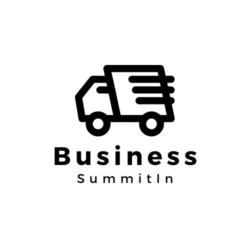
Identify Areas for Cost Reduction
One of the most effective ways to reduce business expenses and increase profitability is to identify areas in your operations that can be minimized. This doesn’t mean cutting corners or reducing quality of service – it just means being efficient and making sure there are no unnecessary costs. Look for areas where existing processes, materials or services may be reduced without sacrificing quality.
Consider assessing current IT systems, software licenses, subscriptions and suppliers to make sure each one is still appropriate. Could any of these be reduced or eliminated? Could any of these be replaced with more economical alternatives? Are there areas where you could reduce costs through bulk purchasing or volume discounts? These are all important questions to ask yourself as you assess where you can save money.
Forecast Expenses Based on Historical Data
Having an accurate forecast of your upcoming expenses helps you save money and avoid surprises. A good way to start is by looking at the data from previous years and making sure to take into account any possible seasonal changes. This will give you a better idea of what your business should expect in the near future.
By doing this, you can plan ahead and budget accordingly. You can also identify any opportunities for savings and areas where a more efficient system may be necessary to optimize your spending.
Utilizing Technology to Automate Tasks and Reduce Labour Costs
Utilizing the right technology in your business can save you time, money, and resources. By automating tasks and processes, you can reduce the need for manual labour. This will help you reduce costs in the long run as it reduces the need to pay employee wages.
You can use technology to automate tasks such as customer support, data entry, and other manual labour intensive processes. You can also use technology to streamline complex processes, saving you time and energy. Automation can also help you spot trends more quickly, helping you make better decisions that will increase profitability.
Tools such as chatbots, virtual assistants, and automation software are just some of the ways that businesses can utilize technology to reduce labour costs and increase efficiency. Consider investing in the right tools for your business to maximize efficiency and reduce costs.
Utilize Suppliers that have Competitive Prices and Excellent Service
Finding the right suppliers for your business is key to reducing expenses when managing your business. Look for suppliers that offer competitive prices and high quality service. Make sure that you research potential suppliers before committing to a long-term relationship with them. Check out reviews from other businesses, look into their pricing structure, ask about their customer service, and ensure they have a good track record for delivering the products or services you need.
Negotiating with suppliers can also help save on costs. Consider proposing a new rate or discount in exchange for a longer agreement or larger order. If you’re able to establish a long-term relationship with a supplier, you’ll benefit from having regular access to their products and services, which can potentially reduce your overall costs.
Containing Costs Through Vendor Negotiation
Successful businesses are masters of containing costs. Utilizing strong negotiation skills and making strategic budget decisions can help you maximize your profits. To get the most out of your vendors, negotiate for key rates whenever possible. Ask for discounts or additional services if feasible, and compare against other potential supplier options.
Each negotiation should be undertaken with careful consideration. Before starting talks, have an understanding of what types of rates or discounts are typical and reasonable for the specific vendor. Establish a minimum rate that will still keep operations profitable for the business.
It’s important to closely monitor payment terms and develop an efficient invoicing system. Establishing automatic payments for your recurring suppliers over time can help ensure timely payments and help improve relationships.
Consolidating Accounts
Any business can benefit from consolidating their accounts to save time and money. When you consolidate your accounts, it means that you are reducing the number of vendors and suppliers you work with to reduce your management overhead. Instead of having multiple service providers, you can deal with just one. This simplifies the process and allows you to negotiate better rates and discounts with your vendor or supplier.
Consolidating accounts not only reduces the burden of managing multiple vendors, but it also gives you more leverage in bargaining for better pricing. By having a single contract with a larger vendor, you can negotiate better terms and get discounts on large orders.
Lastly, consolidating your accounts also helps improve your budgeting accuracy. There will be fewer variables to take into account when predicting expenses which will result in more accurate forecasting.
Analyzing Historical Cost Data
To accurately predict expenses for upcoming periods, it’s crucial to analyze historical cost data and trends. This means looking at any past spending patterns and noting any changes in price or usage year-over-year. If you’ve been in business for a few years, you can use that data to project what you might expect for the future. Start by gathering all data related to expenses such as invoices, bills, and costs of raw materials. Then, review the data as a whole to spot any trends and make any necessary adjustments.
Having a good understanding of historical spending will help you create accurate budgets for the future. It also gives you a baseline to compare potential changes in spending so you can better estimate their impact on profitability. Additionally, analyzing data will enable you to identify areas where you can reduce expenses and increase profits.
Estimating Profitability Changes with Proposed Expenditures
When you are planning budget changes, it can be difficult to estimate how those changes will impact your overall profitability. To help, there are a few steps to take in order to form an accurate prediction of the effect of proposed expenditures on profitability.
- Identify exactly what is being changed and calculate the costs associated with that change.
- Evaluate how much you will be gaining by making the change.
- Identify any offsetting expenses that may arise from the changes.
- Consider other factors such as competitive advantages, customer satisfaction, and market potential.
- Review the entire process and adjust again as necessary.
By taking into account all of these factors, you can make an informed decision on whether or not the change will benefit the company’s overall profitability.
Optimize Inventory to Reduce Business Expenses
Having the right inventory on-hand is key to reducing business expenses. Stocking too much inventory can lead to higher costs, while stocking too little can hamper production. To maximize profit without incurring excessive expenses, it’s important to identify and analyze historical data and trends when forecasting future needs.
An efficient way to balance inventory and expenditure is to set upper and lower limits for how much inventory you should have on-hand. When your inventory goes beyond these limits, it’s time to either ramp up production or outsource some of your needs. This way, you won’t overspend on stock that you don’t need and will stay within budget.
Implement an Efficient Invoicing System
When running a business, effective invoicing is key to making sure you get paid on time. To do this, you need to have systems in place that are automated and streamlined. Investing in a good accounting software can help automate this process and allow you to efficiently manage your accounts receivables. Make sure to include clear payment terms in your invoices and keep track of any payments or discrepancies with customers. This way, you know exactly where you stand with each customer.
Invoicing is an important part of increasing your profitability. If you are not getting paid on time, it can put a strain on your cash flow and affect your bottom line. With a reliable invoicing system, you can be sure that all payments come in on time and that any discrepancies are quickly identified and resolved.
Set Long-Term Goals and Strategies
It is important to have a long-term plan in place when it comes to reducing expenses and increasing profitability. Having an idea of where you’d like your business to be in a few years helps with making better decisions today. You can think about ways to reduce expenditures while also benefiting from increased productivity. This could include implementing new processes, investing in technology, or outsourcing specific tasks.
Take the time to analyse what works and what doesn’t. What areas need improvement and how can that be done? Then create strategies for tackling these issues and focus on cost-effective solutions. When able, negotiate discounts and find ways to save money in the process. This will increase profitability over time as well as maintain a healthy budget.
Incorporate this fact:
Track and update all your financial metrics on an ongoing basis, regularly combating escalating costs.
Using the same structure:
Once you have established goals for your business, it is important to track and update all financial metrics on an ongoing basis. This way you can guard against any escalating costs that could put a dent in your profits. It is important to regularly review things such as overhead expenses, pricing structures for products/services, variable costs related to production, etc. Regularly reviewing and updating these metrics will help keep your business profitable and competitive.
Track and Update Financial Metrics
In order to maximize profits and reduce expenses on a regular basis, it is important to track and update your financial metrics. Keeping an eye on the various elements of spending in your business such as manpower costs, inventory management, invoicing, and payment terms will help ensure you are always in control of costs. By consistently monitoring these metrics and taking proactive measures against upwardly spiraling costs, you can boost profitability for your business.
Creating a system to evaluate your financials on a regular basis will help you stay on top of any changing trends, allowing you to adjust your strategies accordingly. This will help you create long term plans that will make your business even more profitable and reduce expenses in the future.
comments: 0


